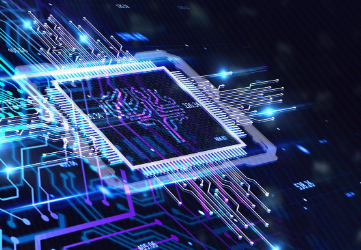Artificial Intelligence (AI) and machine learning (ML) are often celebrated for their sophisticated algorithms and groundbreaking software. However, without the parallel evolution of hardware engineering, none of these advances would be possible. Hardware provides the physical backbone that powers the computational intensity required by modern AI applications. From faster processors to specialized chips, engineering innovations in hardware have dramatically accelerated the pace and capabilities of machine learning. Let’s explore how engineering contributions in hardware are shaping the future of AI.
The Critical Role of Hardware in AI Evolution
Beyond Software: The Need for Speed and Efficiency
Machine learning, especially deep learning, demands enormous computational resources. Training models such as GPT-4 or vision transformers involve processing billions of parameters and massive datasets. Traditional CPUs, designed for general-purpose tasks, could not keep up with these demands.
Hardware engineers stepped in to design specialized architectures that could process AI workloads faster and more efficiently. As a result, hardware innovations now stand at the core of AI breakthroughs, enabling everything from real-time language translation to autonomous driving.
Key Hardware Innovations Driving AI
Graphics Processing Units (GPUs)
Initially developed for rendering graphics, GPUs found a new purpose in AI. Their architecture, optimized for parallel processing, makes them ideal for training machine learning models that require handling vast amounts of simultaneous calculations.
NVIDIA, AMD, and other companies have pushed GPU design specifically toward AI applications, introducing features like tensor cores, which significantly speed up deep learning computations.
Tensor Processing Units (TPUs)
Developed by Google, TPUs are custom-built chips specifically engineered to accelerate AI workloads. Unlike GPUs, which are versatile, TPUs are tailored for matrix operations—the backbone of neural networks—making them highly efficient for both training and inference phases of machine learning models.
TPUs allow companies to deploy complex AI applications at scale while reducing energy consumption and operational costs.
Application-Specific Integrated Circuits (ASICs)
ASICs are customized hardware designed for a specific task, offering maximum efficiency. In AI, ASICs can be fine-tuned to optimize specific algorithms or models. Their tailored design reduces unnecessary computations, cuts power usage, and increases processing speed, making them essential in data centers and mobile AI applications.
Field-Programmable Gate Arrays (FPGAs)
FPGAs offer a balance between flexibility and performance. They can be reprogrammed post-manufacturing, allowing engineers to optimize AI operations depending on specific needs. Their adaptability makes FPGAs ideal for edge AI applications, such as in IoT devices and autonomous vehicles.
FPGAs are particularly useful in environments where hardware must be upgraded without replacing physical devices, ensuring longer life cycles and better return on investment.
Engineering Challenges in AI Hardware Development
Balancing Power and Performance
One of the greatest challenges hardware engineers face is managing the trade-off between performance and power consumption. AI computations are resource-intensive, and without efficient hardware, the energy costs can be astronomical.
Efforts are underway to create processors that are both powerful and energy-efficient. Techniques such as dynamic voltage scaling, multi-core architectures, and neuromorphic engineering are helping balance this critical equation.
Thermal Management
High-performance AI hardware generates tremendous heat, which, if not properly managed, can damage components and reduce efficiency. Engineers design advanced cooling systems, such as liquid cooling and sophisticated heat sinks, to ensure optimal performance and longevity of hardware systems.
Miniaturization and Edge AI
As AI moves toward the edge—deploying models on smartphones, wearables, and other embedded systems—hardware must be compact yet powerful. Engineers are innovating by creating smaller chips that deliver high performance without draining device batteries or generating excessive heat.
This includes developments like AI accelerators embedded directly into smartphones, enabling features like real-time translation, image enhancement, and voice recognition without cloud dependency.
Neuromorphic and Quantum Hardware: The Future Frontiers
Neuromorphic Engineering
Inspired by the human brain, neuromorphic chips are designed to process information in a way that mimics neural networks biologically. These chips use significantly less energy and offer remarkable speed advantages for certain AI tasks.
Companies like Intel with their Loihi chip are pioneering this domain, promising AI systems that can learn and adapt in real time, much like living organisms.
Quantum Computing
Quantum computing holds the potential to revolutionize AI hardware by handling computations that are currently infeasible for classical computers. Quantum bits (qubits) can exist in multiple states simultaneously, enabling massive parallelism.
Although still in its early stages, the intersection of quantum hardware and AI could unlock unprecedented advances in areas like optimization, simulation, and complex pattern recognition.
The Impact of Hardware on AI Research and Application
Accelerating AI Research
Faster, more efficient hardware drastically shortens model training times, allowing researchers to experiment more and iterate faster. This accelerates innovation across fields, leading to faster deployment of new AI capabilities.
For instance, breakthroughs in natural language processing, like the emergence of large language models, were made possible largely due to advancements in GPU and TPU technologies.
Democratizing AI Access
Cheaper, energy-efficient, and compact AI hardware lowers the barrier to entry for startups and smaller organizations. Open hardware initiatives and cloud-based hardware platforms allow anyone with an idea to build and deploy AI applications without massive capital investments.
This democratization is crucial for fostering innovation across sectors and geographies.
Conclusion: Engineering Hardware, Empowering Intelligence
The incredible strides made in artificial intelligence are not just the triumph of brilliant algorithms but also of groundbreaking hardware engineering. By crafting processors that cater specifically to the needs of machine learning, engineers have powered a technological renaissance, enabling AI to impact every facet of life.
As AI grows more sophisticated, the demand for innovative, sustainable, and powerful hardware will only intensify. Future developments in neuromorphic chips, quantum computing, and edge AI devices promise to usher in a new era of intelligent systems that are faster, smarter, and more accessible than ever before.
Engineering excellence in hardware will continue to be the unseen force propelling AI from visionary concepts into everyday reality.
Also Read :
